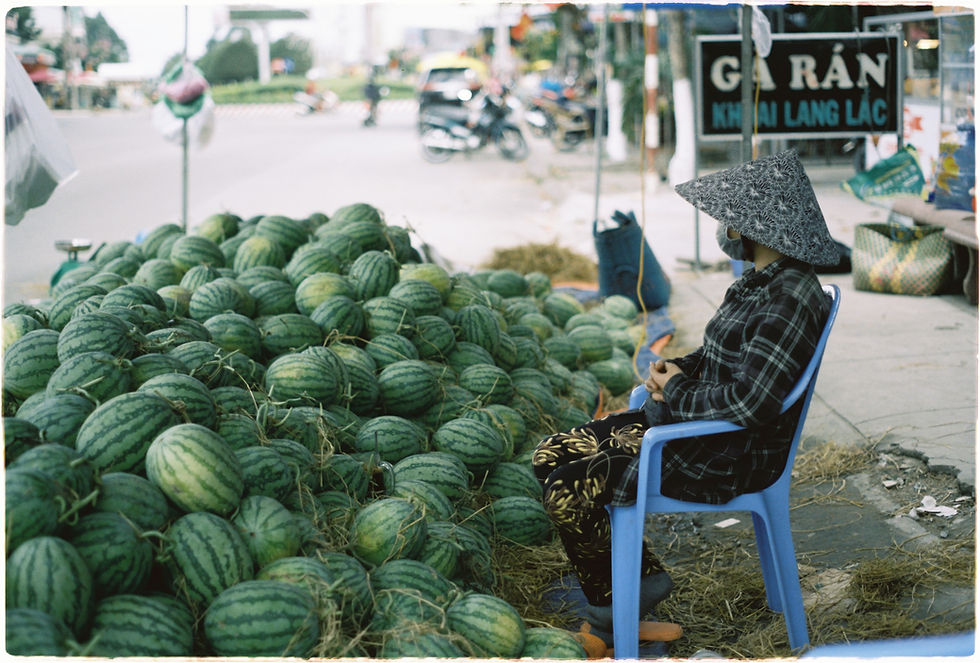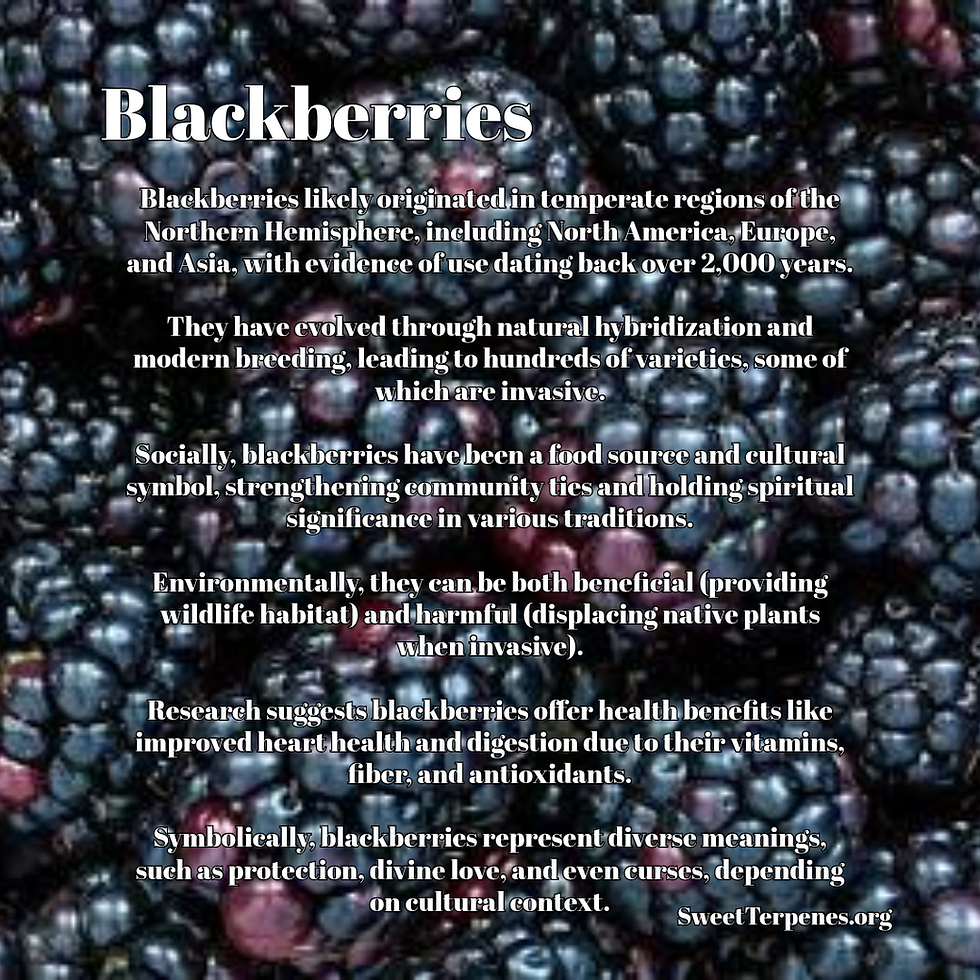Watermelon Origin, History, Symbology, Health Benefits and Negative Impacts on Environment & Human Rights
- Heather Stanley

- Jul 12
- 4 min read

Origin of Watermelon
Geographic Origin: Watermelon (*Citrullus lanatus*) originated in Africa, likely in the Kalahari Desert region of southern Africa or the Nile Valley, with evidence of cultivation dating back over 4,000 years to ancient Egypt. Archaeological findings, such as watermelon seeds in Egyptian tombs (including Tutankhamun’s), suggest its early domestication.
Wild Ancestor: The wild ancestor, *Citrullus colocynthis* (colocynth), was bitter and used for its seeds or as a water source in arid regions. Early cultivation focused on selecting for sweeter, fleshier fruit.
Spread: Watermelon spread through trade routes to the Mediterranean, Middle East, and Asia by 2000 BCE. By the 10th century, it reached India and China, where further breeding enhanced its sweetness and size.

Evolution into Modern Industry
Domestication and Breeding: Over centuries, selective breeding transformed watermelons into the sweet, juicy fruit known today. By the Middle Ages, cultivation was widespread in Europe, Africa, and Asia. The 19th and 20th centuries saw systematic breeding for traits like seedlessness, disease resistance, and uniform size.
Global Industry: Today, watermelons are grown in over 100 countries, with China as the largest producer (60% of global supply, ~79 million tons annually). The U.S., Turkey, and India are also major producers. Modern varieties include seedless hybrids, mini watermelons, and yellow-fleshed types.
Technological Advances: Industrial farming uses irrigation, pesticides, and mechanized harvesting to boost yields. Genetic modification and hybrid breeding have created resilient, high-yield cultivars. Global trade ensures year-round availability, with exports valued at over $2 billion annually.

Negative Impacts on Environment and Human Rights
Environmental Impacts:
Water Usage: Watermelon cultivation requires significant water (up to 50 gallons per fruit in arid regions), straining resources in water-scarce areas like parts of Africa and the Middle East.
Pesticide Pollution: Heavy pesticide use contaminates soil and water, harming ecosystems and biodiversity. Runoff can affect aquatic life and drinking water quality.
Land Use: Large-scale monoculture farming depletes soil nutrients, leading to erosion and reduced fertility. Deforestation for farmland expansion disrupts habitats.
Carbon Footprint: Global shipping of watermelons contributes to greenhouse gas emissions, especially for out-of-season imports.
Human Rights Issues:
Labor Conditions: In regions like Mexico and Southeast Asia, watermelon farm workers often face low wages, long hours, and exposure to harmful pesticides without adequate protection. Migrant laborers are particularly vulnerable to exploitation.
Land Disputes: In some African countries, large-scale watermelon farming has led to land grabs, displacing local communities and restricting access to traditional farmlands.
Child Labor: Reports from countries like India and the Philippines indicate child labor in watermelon fields, often under hazardous conditions.
Health Benefits
Nutritional Profile:
Hydration: Watermelons are 92% water, making them excellent for hydration.
Vitamins and Minerals: Rich in vitamins A, C, and B6, as well as potassium and magnesium.
Lycopene: Contains high levels of lycopene, an antioxidant linked to reduced risk of heart disease and certain cancers (e.g., prostate).
Citrulline: Provides citrulline, an amino acid that may improve blood flow, reduce blood pressure, and enhance exercise performance.
Low-Calorie: Approximately 46 calories per cup, suitable for weight management.
Anti-Inflammatory: Compounds like cucurbitacin E may reduce inflammation and oxidative stress.
Uses

Culinary:
- Eaten fresh, juiced, or blended into smoothies.
- Used in salads, salsas, desserts, and grilled dishes (e.g., watermelon rind pickles).
- Seeds are roasted and consumed as snacks in Africa and Asia or processed into oil.
Non-Culinary:
- Rinds used in composting or as animal feed.
- Traditional medicine in Africa and Asia uses watermelon seeds and rinds for diuretic and digestive properties.
- Watermelon extract in cosmetics for hydration and antioxidant benefits.

Symbology Throughout History
Ancient Egypt: Watermelons symbolized fertility and abundance, often placed in tombs to nourish the deceased in the afterlife.
African Cultures: In some African traditions, watermelons represented life and sustenance due to their water content in arid regions.
China: Associated with good luck and prosperity, often used in festivals and as a decorative motif in art.
Western Art: In Renaissance still-life paintings, watermelons symbolized summer abundance and earthly pleasures.
Modern Symbolism: In the U.S., watermelons are tied to summer, community (e.g., picnics), and occasionally racial stereotypes (used negatively in historical caricatures, now reclaimed in some contexts).
Political Symbolism: In Palestine, watermelon imagery (red, green, white, black colors) is used as a symbol of resistance and identity, especially when national flags are restricted.
Below is a chart showing the top 10 countries by watermelon production in 2021, based on the most recent reliable data from the Food and Agriculture Organization (FAO). China dominates global production, followed by Turkey, India, and others. The chart uses a bar type to clearly compare production volumes in tonnes.

*China produces ~60.4 million tonnes, accounting for roughly 60% of global production, far outpacing others.
Text and chart generated via Grok. Images via Wix and Unsplash.
Data Source: The data is sourced from the FAO Statistical Database (2021), as referenced in posts on X and web sources.











Comments